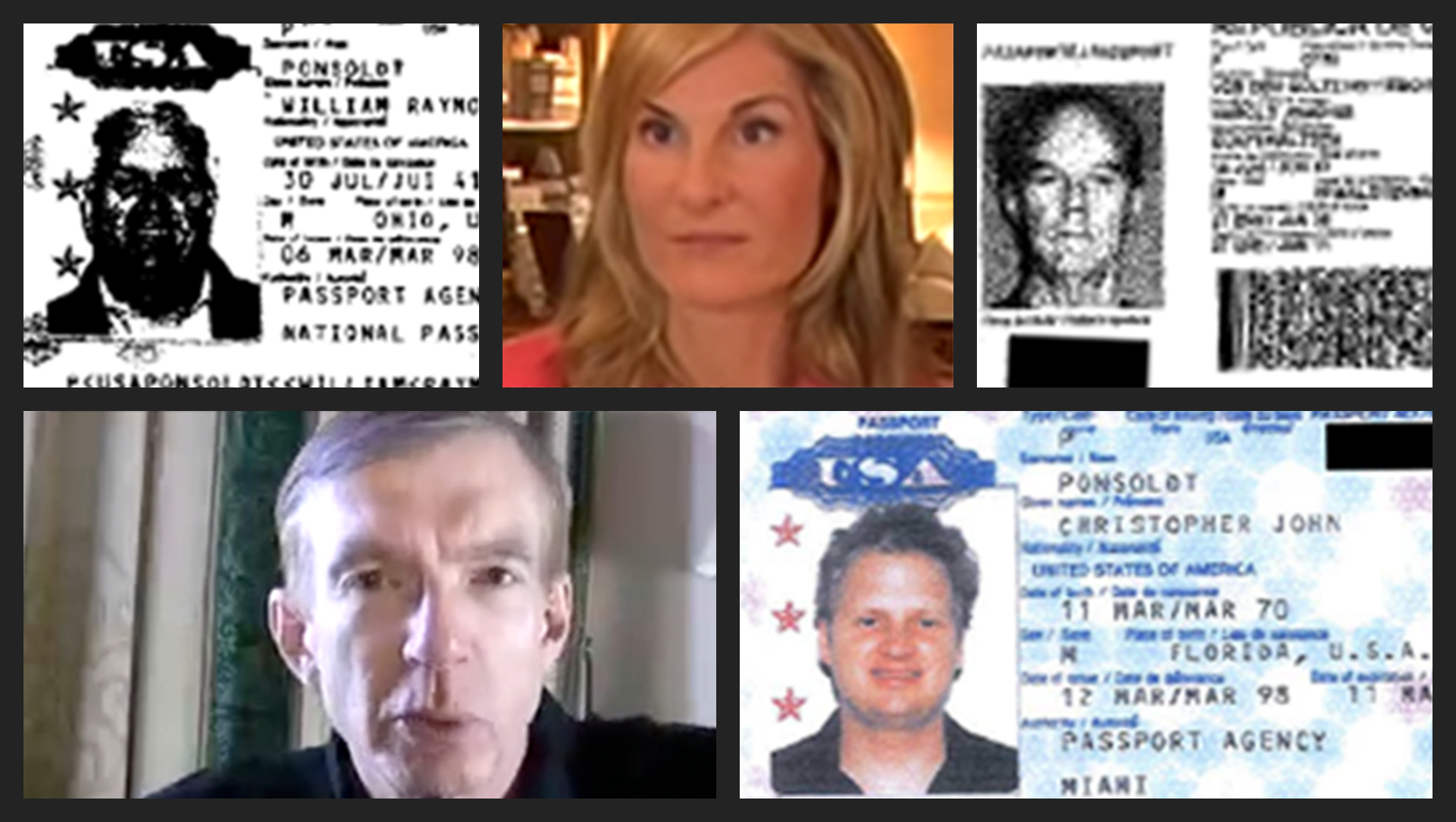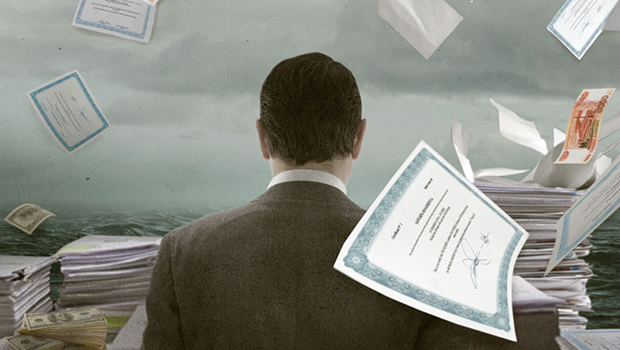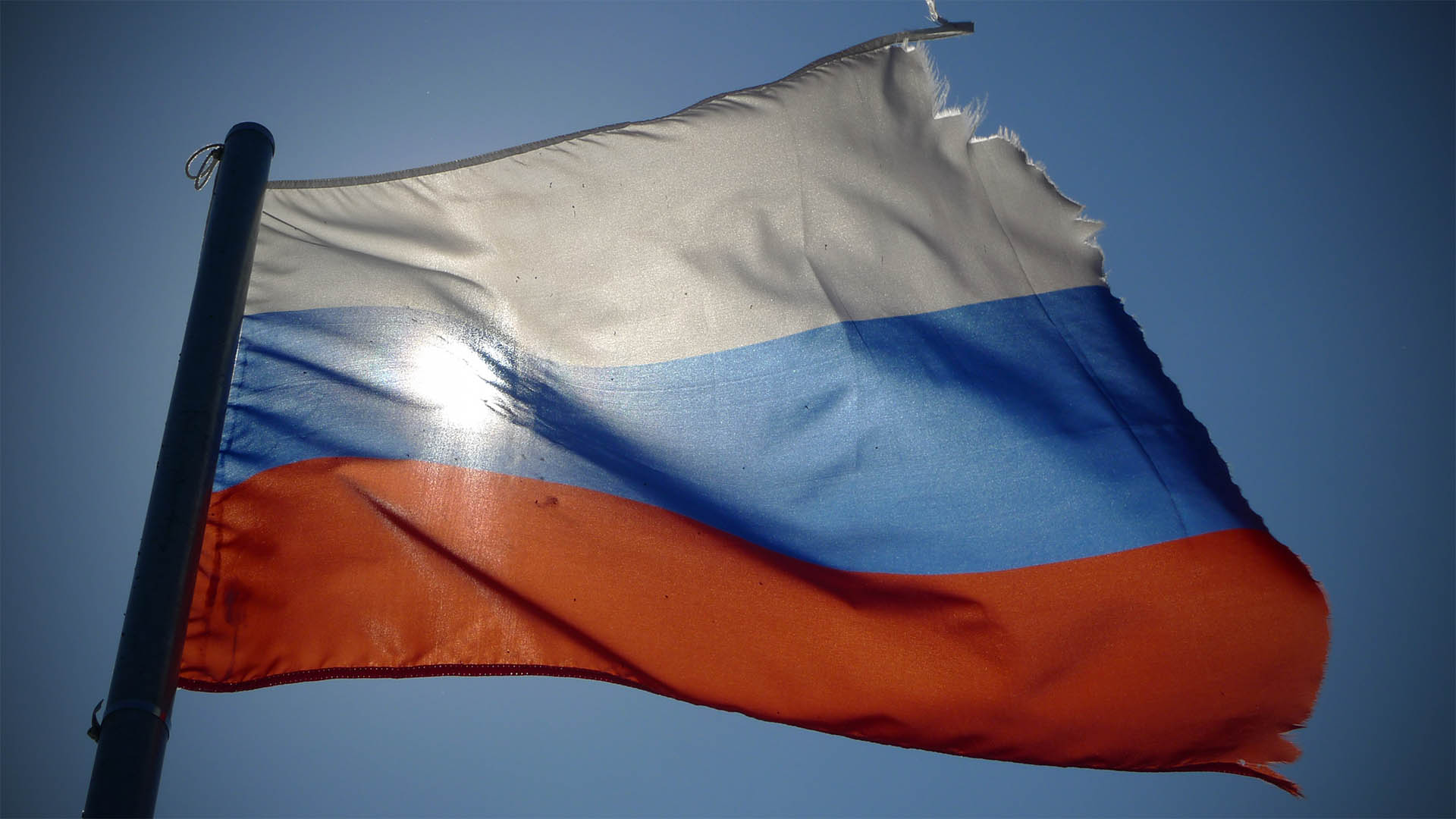When federal prosecutors unveiled the first criminal charges in the U.S. arising from the Panama Papers disclosures, they kept secret the names of four of five American clients whom they allege played key roles in offshore tax schemes but have not charged.
Just one of the five American clients, Harald Joachim Von der Goltz, was named in the indictment. Referred to as Client 2, he was charged along with two Mossack Fonseca employees, Ramses Owens and Dirk Brauer, and a Boston accountant, Richard Gaffey. Gaffey and Von der Goltz deny the charges.
The Justice Department stated in the Dec. 4 indictment that both the named and unnamed US clients had “falsely and fraudulently failed to report” their undeclared offshore accounts.
Two of those Americans later declared assets under a program that grants immunity from criminal prosecution to those who cooperate with authorities and repay taxes, the DOJ said.
Victor Song, former chief of the IRS criminal investigations division, told ICIJ that the DOJ and Internal Revenue Service may have listed Americans anonymously due to either their cooperation or because further charges lay ahead.
“Maybe they’re not naming names, but they’re shedding a light on what might be to come,” Song said.
“This is the first step of the U.S. going public,” Song said. “It’s not going to be the last.”
To uncover the identities of the unnamed clients, the International Consortium of Investigative Journalists went back to the 11.5 million files from the Panama Papers to match emails, passports, invoices and sales contracts with the indictment.
This is what we know about all of the U.S. clients.

Unnamed “Client 1”: Marianna Olszewski
The DOJ describes Client 1 as a U.S. citizen who resides in Manhattan and who lived in London around 2001, a description that matches Panama Papers records of interactions with Olszewski.
“Two offshore accounts on the Isle of Man were nominally held by two offshore shell companies, which were formed by Mossack Fonseca,” the indictment stated.
This description matches two Isle of Man companies, GBL Consulting Partners Ltd. and Merritt Marketing and Services Ltd., which held bank accounts with HSBC, and were linked to Olszewski in the Panama Papers through emails, bank statements and payment schedules sent to her by Mossack Fonseca.
The indictment also states that Mossack Fonseca employees met with Client 1 in a Manhattan hotel in 2008. Emails from the Panama Papers in April 2008 discuss a planned meeting at the Sheraton in Times Square and Mossack Fonseca employees proposed buying a gold bracelet for the client’s recently born baby. Want to read the original email? (In Spanish)
Client 1 falsely sent $3 million to the U.S. by claiming “the money was the result of the sale of a company, even though, in truth, it was not,” the DOJ stated.
Want to read more about her relationship with Mossack Fonseca? Read this 2008 email chain that discusses ways to bring money into the U.S.
ICIJ’s media partner the BBC reported at the time of the Panama Papers that Mossack Fonseca advised Olszewski to use the services of a 90-year old British man who, on a bank account and other documents, would pretend to be the real owner of the company.
The DOJ reported that Client 1 “falsely and fraudulently failed” to declare offshore assets between 2001 and 2013, but voluntarily disclosed her offshore assets in 2013.
Olszewski did not respond to multiple requests for comment.

Named “Client 2”: Harald Joachim von der Goltz
The only named U.S. resident client in the indictment, Von der Goltz evaded taxes on multimillion-dollar assets from as early as 2000, the DOJ alleged. He was arrested in London on Dec. 3.
He was “without a doubt the biggest” U.S. client, according to an email sent by Mossack Fonseca employee Ramses Owens.
The DOJ alleged that Von der Goltz began using offshore companies in the late 1980s under the name of the Revack Trust and Revack Holdings Foundation. By 2012, the DOJ alleged, the companies’ investments were worth more than $35 million.
The DOJ claims that Von der Goltz pretended his now 102-year old mother, who lives in Guatemala, owned companies that he controlled. At one meeting, according to the DOJ, Mossack Fonseca’s Owens suggested Von der Goltz use a Panama foundation owned by the lawyer as a buffer to shield Von der Goltz’s true ownership.
Emails show that Mossack Fonseca listed Von der Goltz as a Guatemala resident but knew he lived in the U.S. “My suggestion,” wrote Mossack Fonseca lawyer Owens in 2009. “Leave everything as it is with Von der Goltz, that is, stay and take the potential risk.”
Even after Von der Goltz contacted the Department of Justice in May 2016 after his name appeared in the Panama Papers, the DOJ said, he continued to make “false statements” to investigators.
The Boston Globe reported that Von der Goltz’s attorney called the indictment ‘‘a desperate attempt to salvage an American case out of the Panama Papers.’’

Unnamed “Client 3”: William Ponsoldt
William Ponsoldt, a breeder of Arabian horses and real estate mogul, was among Mossack Fonseca’s other significant U.S. clients, according to Mossack Fonseca emails.
Ponsoldt died in September 2017, matching the DOJ’s description.
The DOJ describes Client 3 and his offshore activities in detail, including a condominium bought in Grand Bay Towers, Panama City, which matches information in emails and property records from the Panama Papers. Read the email.
The law firm managed about $8 million in offshore assets for “Client 3”, who did not declare his wealth to the IRS from 2004 to 2016, the DOJ alleged.
Mossack Fonseca provided stand-in or “nominee” company directors and offered at least one pre-existing “shelf” company that the law firm “created in advance…and kept unused on a virtual ‘shelf’ until a client needed it,” the DOJ alleged.
In early 2017 and after reporting on the Panama Papers by ICIJ’s media partner The New York Times, Ponsoldt started cooperating with law enforcement. The DOJ stated that Ponsoldt allowed U.S. law enforcement to monitor his telephone conversations with Mossack Fonseca’s Brauer in which the men discussed past tax evasion and how to avoid paying taxes in the future.
In July 2017, Ponsoldt worked with an undercover U.S. government agent who posed as a U.S. financial adviser. The three met in the Bahamas. The undercover agent discussed evading U.S. taxes and laundering money for clients “involved in a pump and dump securities fraud scheme.”

Unnamed “Client 4”: Christopher Ponsoldt
The DOJ describes Client 4 as the son of Client 3 and a Miami resident who used the internal codename “son” when communicating with Mossack Fonseca.
Over 100 emails and documents refer to Christopher Ponsoldt and the codename “son” in the Panama Papers files. Read one document with the codename.
The DOJ also describes William Ponsoldt, his wife and son Christopher meeting in Panama sometime in 2005 and a further visit by Christopher in 2006. The Panama Papers include emails from William Ponsoldt, who went by the codename father, and Christopher that confirm visits to Panama.
“Client-4 was first introduced to Mossack Fonseca in or about January 2005, when Client-4 traveled to Panama with Client-4’s parents – Client-3 and Client-3’s wife – for vacation,” the indictment states.
That description matches an email sent by Christopher Ponsoldt’s father, William, in June 2006 following a previous visit. “My wife, son Chris and I spent two days in your offices in Panama,” William Ponsoldt wrote.
Between 2006 and 2008, the DOJ alleges, Christopher Ponsoldt transferred $1.6 million of his money to Mossack Fonseca, sometimes in amounts below $10,000 “to avoid leaving [a] track.” Under U.S. law, banks must obtain more detailed documents for transactions greater than $10,000.
According to the indictment, Mossack Fonseca invested Christopher Ponsoldt’s money in banks in Switzerland, Andorra and Panama owned by shell companies and sham foundations. Mossack Fonseca’s Ramses Owens said that Ponsoldt’s children could, upon their father’s death, later receive tax-free money “disguised” as income or “business expenses,” the DOJ alleged.
Christopher Ponsoldt decided to end his relationship with Mossack Fonseca in 2011, according to the DOJ. Ponsoldt did not respond to requests for comment sent to his email and to his attorney.

Unnamed “Client 5”: Jurgen Wolff
The DOJ described Client 5 as a “U.S. citizen who currently lives in London, the United Kingdom” and who earned an income from writing books and scripts.
This information matches Panama Papers records, which describes Wolff as living in London, and Wolff’s website, which lists his achievements as an author, playwright and television script writer for shows and films that featured stars Rob Lowe and Kelsey Grammer.
“Shortly after this initial meeting…[in or about 2008], Client-5 traveled to Mossack Fonseca’s headquarters in Panama,” the DOJ indictment stated.
This matches with emails from Wolff in the Panama Papers.“We (my partner and i) will arrive via Copa flight CM303 from Los Angeles arriving 10.30AM on Tuesday, September 16,” Wolff wrote in an email dated Sept. 9, 2008. Want to read the email?
According to the DOJ, Mossack Fonseca employees knew “Client 5” was a U.S. citizen and assured him they would keep his money “outside of the U.S. tax system.” Mossack Fonseca’s Dirk Brauer told “Client 5” to keep his “hands off the structure in place, otherwise it would not work, meaning that [“Client 5”] would have to pay U.S. taxes,” the DOJ alleged.
“Client 5” declared his offshore accounts to the IRS in 2014, according to the DOJ.
The DOJ reported that Client 5 “falsely and fraudulently failed” to declare assets between 2008 and 2013, but voluntarily disclosed his assets in 2014.







